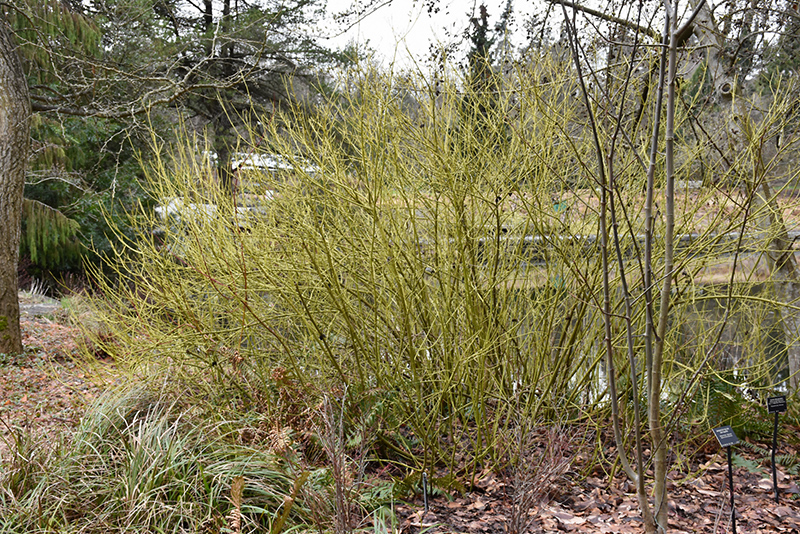>> Home
Yellow Twig Dogwood
Cornus sericea 'Flaviramea'
Height: 8 feet
Spread: 10 feet
Sunlight:
![]()
![]()
Hardiness Zone: 2
Other Names: C.stolonifera, Red-Osier
Description:
A stunning shrub for northern landscapes, very hardy; bright yellow stems show well against the winter snow, especially when used in groups; will grow quite large
Ornamental Features
Yellow Twig Dogwood has clusters of creamy white flowers at the ends of the branches in late spring. It has green deciduous foliage. The pointy leaves turn yellow in fall. It produces white berries in late summer. The yellow branches are extremely showy and add significant winter interest.
Landscape Attributes
Yellow Twig Dogwood is a multi-stemmed deciduous shrub with a more or less rounded form. Its average texture blends into the landscape, but can be balanced by one or two finer or coarser trees or shrubs for an effective composition.
This shrub will require occasional maintenance and upkeep, and can be pruned at anytime. It is a good choice for attracting birds to your yard. Gardeners should be aware of the following characteristic(s) that may warrant special consideration;
- Suckering
Yellow Twig Dogwood is recommended for the following landscape applications;
- Mass Planting
- Hedges/Screening
- General Garden Use
- Naturalizing And Woodland Gardens
Planting & Growing
Yellow Twig Dogwood will grow to be about 8 feet tall at maturity, with a spread of 10 feet. It tends to fill out right to the ground and therefore doesn't necessarily require facer plants in front, and is suitable for planting under power lines. It grows at a fast rate, and under ideal conditions can be expected to live for approximately 20 years.
This shrub does best in full sun to partial shade. It is an amazingly adaptable plant, tolerating both dry conditions and even some standing water. It may require supplemental watering during periods of drought or extended heat. It is not particular as to soil type or pH. It is somewhat tolerant of urban pollution. This is a selection of a native North American species.


